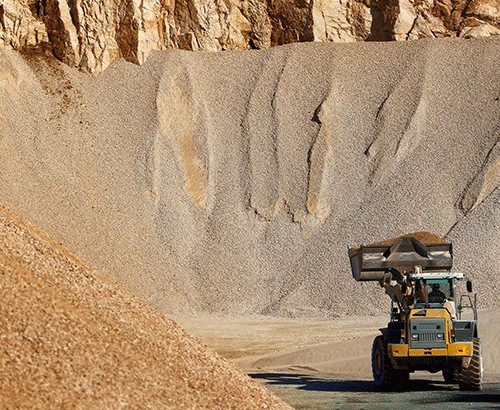State of Play: Why the HVACR Market Is Ripe for Consolidation

If you explore the landscape for mergers and acquisitions (M&A) for contractors, the mechanical, electrical and plumbing (MEP) sectors have always represented a vibrant component of the built environment for transactions.
But today we are witnessing an enormous uptick in M&A in the heating, ventilation, air-conditioning and refrigeration (HVACR) segments. As shown in Exhibit 1, activity has been on the rise (note: COVID-19 created a pause in most deal activity in the second quarter of 2020). What is driving this activity? This article will explore the trends we are seeing in HVACR that are making it ideally suited for M&A in today’s marketplace.
Fragmentation Defines the Industry
First and foremost, the industry is highly fragmented. The largest privately held HVAC/mechanical contractor in the U.S. is Service Logic, which, with an estimated $200 million in revenue, holds a mere 0.20% of the $100 billion HVACR market. Such market dynamics create an environment ripe for consolidation from public and private strategic parties as well as private equity firms.

A Proliferating Industry
Despite its size, the recession-resistant HVACR market has been growing at almost double the rate of gross domestic product (GDP) every year since 1980. Some of t he more notable factors affecting the mechanical sector’s growth include:
- Population growth, which increases demand for commercial, industrial and institutional spaces.
- An aging installed base of buildings and equipment – in the U.S. alone, there are more than 110 million installed HVAC units, 92 million of which are older than 10 years.
- Increasing complexity, technology and efficiency of mechanical systems.
- Heightened awareness of and focus on air quality, sustainability and energy efficiency.

Modernization of HVACR Demand
Antiquated commercial, industrial and institutional buildings often lack high air quality. Substituting an aging structure’s existing mechanical infrastructure with newer, energy-efficient systems significantly reduces its energy use, carbon footprint and operating costs. And while the demand for new construction has shown up in the revenue of most HVAC/mechanical contractors, the higher margin service and maintenance associated with these new installations are drawing tremendous interest from acquirers. In addition, the recurring revenue nature of these services gives acquirers greater visibility and certainty into future performance, which means banks are more comfortable lending against these cash streams, ultimately resulting in valuations far exceeding market norms. For example, while a traditional mechanical contractor focused entirely on new construction may be valued at 3-5x earnings before interest, taxes, depreciation and amortization (EBITDA), we have seen service-heavy HVACR contractors trade at EBITDA multiples of 7-8x and, in some instances, for larger, more sophisticated operators, 10-12x.
Technology has also played a role in growing needs for mechanical services. The growth in the installed base of mechanical units; the use of electronic sensors and building automation controls; and demand for higher efficiencies have all spurred increasing demand for follow-on services like maintenance, repair, replacement and systems audits. Growth in HVACR services is not limited to the U.S. Increasing global temperatures have become a major factor behind the growing demand for HVAC systems around the world. According to NASA’s Goddard Institute of Space Studies (GISS), the average global temperature has risen by 2 degrees Fahrenheit every year since 1980. Higher temperatures, coupled with greater disposable incomes from emerging markets, are driving an ever-increasing demand for air conditioning.

Fresh Food
As any reader living under the global pandemic can attest, food delivery has exploded during the pandemic, with consumers barred from sitting indoors spurring enormous demand for food-storage warehouses. In 2020, 10% of groceries were ordered online, and some analysts expect that number to increase to 12% by 2025. As a result, real estate development companies like Americold Realty Trust are developing millions of square feet of temperature-controlled warehouses to store perishables such as meat and produce. In another sign of the times, Uber cofounder Travis Kalanick is investing more than $130 million to open CloudKitchens, a startup that rents commercial space and turns it into shared kitchens for restaurateurs. Given these trends, Emergen Research predicts the global cold storage construction market will increase from $7 billion in 2019 to $18.6 billion in 2027, a compound annual growth rate of 13%. These factors bode well for HVACR contractors and their ability to grow through acquisitions.
Active Buyers
One element of t he HVACR market t hat distinguishes it from other verticals within construction is the robust buyer environment. For vertical general contractors, there is a dearth of large public companies and almost no interest from financial acquirers. Large public players such as EMCOR and Comfort Systems, on the other hand, have long grown through acquisitions of mechanical and HVAC contractors. Today, private equity is making the biggest impact on the acquirer side of the industry. Estimates on the number of private equity firms in the U.S. vary, but at a minimum, there are 4,000 U.S. P/E firms in the country, the vast majority of which eschew the construction industry due to the project-based nature of its work, cyclicality, bonding, unions and other challenges. In addition, many construction companies yield low profit margins relative to other industries, which inhibits both scalability and bank loans used to finance the acquisitions. HVACR services, however, deviate from this paradigm. These businesses often have underlying maintenance contracts, recurring revenue models, lower asset intensity (i.e., capital expenditures) and high financial visibility. Combined, these factors are conducive to the private equity model of using debt financing to buy and build small and medium-sized contractors operating in a fragmented universe.
Commanding Outsized Premiums
FMI has witnessed an enormous uptick in M&A activity for HVACR contractors. Trends such as rising disposable incomes and temperature changes have increased demand for air conditioning globally. In the U.S, robust private equity institutions and established public acquirers create an environment conducive to business owners contemplating exits. Aging buildings, modernization of energy efficiency solutions and positive technology trends all foster an ideal setting for favorable growth for these contractors. While all these developments bode well for new construction, HVACR contractors that hold recurring, underlying service agreements can command outsized premiums in today’s market.



